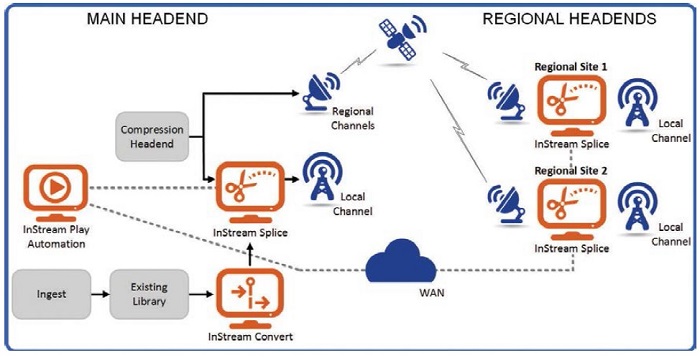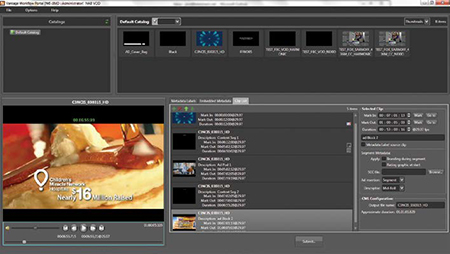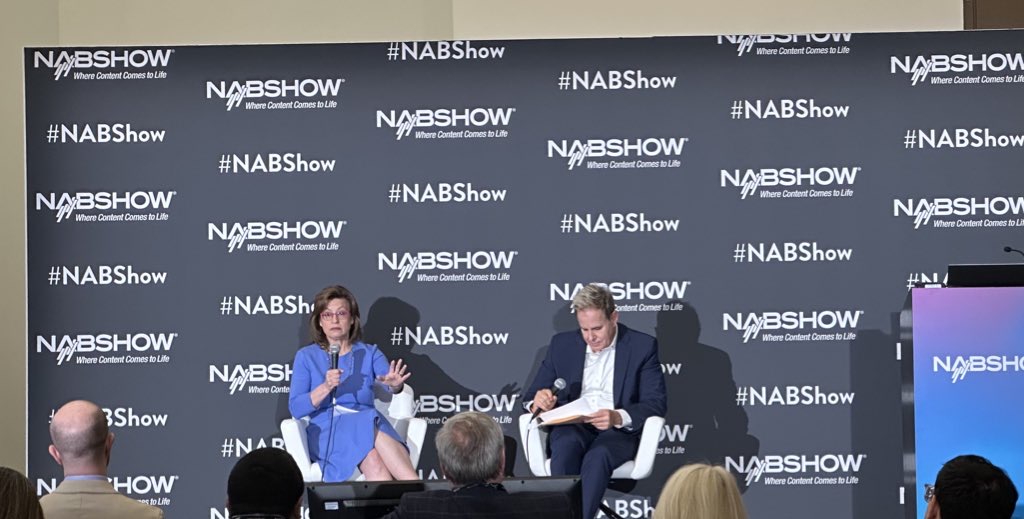Broadcasters Eye DAI to Compete With Online
General Dynamics Mediaware’s InStream Splice enables seamless insertion of file-based and live video feeds directly into the live compressed digital video stream.
OTTAWA—Based on global ad revenues, Google is the world’s largest media owner; according to ZenithOptimedia’s Top Thirty Global Media Owners 2015 report. Moreover, Google is 136 percent bigger than Disney, the world’s second-largest media owner. Google is also bigger, in terms of ad revenues, than Disney—and the third-largest media company, Comcast—combined.

One major reason why Google has gained such traction in the advertising market is its ability to narrow-focus its ad deliveries based on each user’s personal demographics and preferences; ensuring that a 20-something male isn’t seeing commercials for Depends. In contrast, broadcasters are stuck with linear advertising where one ad is seen by all.
“Even when a TV show is targeted at a specific demographic, linear advertising cannot provide the same precise targeting offered by Google, Facebook, and other major websites,” said Aravindh Vanchesan, digital media industry manager for research firm Frost & Sullivan, and an expert in cutting-edge advertising technologies. “The difference is similar to the long-distance precision of a sniper’s rifle, and the scattered birdshot blast of a shotgun.”
CUSTOM DEMOGRAPHICS

Telestream’s VOD Producer DAI provides DAI functionality for content owners and cable TV operators.
Fortunately for broadcasters, there is a weapon that can help them stand their ground with Google and other major websites: dynamic ad insertion. DAI allows broadcasters to electronically mark their linear program feeds with the “in” and “out” points where commercials and PSAs have been inserted. Like the in/out points of a video edit, these points alert a connected DAI server/service to places in the feeds where new ads can be inserted. And like Google, these ads can be selected based on the specific demographics and preferences of viewers.
“The only downside is that this insertion can only be done in non-broadcast mode, such as cable TV VOD playback or OTT streaming,” said Vanchesan. “Still, this represents an opportunity for broadcasters to make their program feeds more valuable to advertisers, thus increasing the amount that they can charge for their slots.”
Case in point: “‘With the advent of dynamic ad insertion, broadcasters can decide when to go with dynamic targeted ads online immediately or add to ratings within the C3 window and then move to dynamic targeted ads,” said Corey Halverson, product director of media business solutions for Akamai. “This can deliver more ad revenues to streaming broadcasters.”
Get the TV Tech Newsletter
The professional video industry's #1 source for news, trends and product and tech information. Sign up below.
THINKING AHEAD
At present, dynamic ad insertion is not a major priority for broadcasters; at least based on their level of takeup. “Some of the major networks are doing some work in this area,” Vanchesan said. “However, right now many don’t see the financial benefit in terms of CPMs [cost per impression] and increased ad revenues, so they are going slow.”
Broadcasters’ attitudes to DAI may change once the ATSC 3.0 standard is deployed. Under ATSC 3.0, it will be possible to replace linear ads during live broadcasts with substitute ads stored in the viewers’ smart TVs or set-top boxes. Delivered by non-real-time transmissions, these substitute ads can be delivered embedded in the ATSC 3.0 OTA signal stream, or via a connected broadband channel.
“With ATSC 3.0, broadcasters will be able to insert targeted ads based on regional zones or audience segments,” said Anne Schelle; managing director for Pearl, the broadcaster-driven next-generation research partnership.
Triveni Digital, a Princeton, N.J. based provider of professional monitoring and metadata management solutions for broadcast, sees a real future for DAI under ATSC 3.0, according to Ralph Bachofen, vice president of sales and marketing. At the NAB Show, the company demonstrated targeted advertising technology for the nextgen standard. “ATSC 3.0 can give broadcasters the kind of DAI flexibility currently reserved today for cable TV, and the Web,” Bachofen said.
Other vendors are already releasing products that leverage the power of DAI for broadcasters. For instance, Elemental Technologies’ Delta video platform, which manages the packaging and distribution of video across multiple viewing platforms, includes the ability to set and read “ad insertion” points, on a “justin-time” basis.” Rather than having to store multiple prerecorded versions of the program feed, Delta can do DAI on the fly with each playout. “You can use this same feature to serve national TV ads on a network feed with localized ads in real-time,” said Lionel Bringuier, director of product management for Elemental in Portland, Ore. “Delta adds a level of content control that frees up broadcasters to serve various parts of their audiences more effectively.”
General Dynamics Mediaware’s InStream is an integrated, scalable liner TV ad insertion and playout system that runs on off-the-shelf IT-grade hardware. Capable of serving multiple channel feeds, InStream can frame-accurately splice content into compressed transport stream broadcast, according to Shane Angelo, sales director for the Australian-based company. “At its core, InStream enables operators to regionalize linear broadcasts through the insertion of either live or prerecorded content,” he said. “File-based content, such as advertisements, promos and news clips in short and long form, can be loaded directly into InStream Splice’s embedded video server for direct playout.”
Disney/ABC recently chose Imagine Communications’ VersioCloud IP-based infrastructure to migrate its global playout/distribution system to the cloud, a move that will help advance the networks’ DAI capabilities. Glen LeBrun, vice president of product marketing for Imagine in Dallas describes Disney’s adoption of VersioCloud as a “‘virtual master control’ approach that supports highly flexible ad insertion based on regional and demographic criteria. We feel that DAI is the right way to go in this setting, which is why it is a big part of Versio-Cloud.”
At the 2015 NAB Show, Telestream introduced its VOD Producer DAI, which provides DAI functionality for content owners and cable TV operators. “The big problem for such providers is that their VOD content has been assembled in complete linear form; if you want to replace the ads, you have to redo the entire video feed,” said Paul Turner, vice president of enterprise product management for the Nevada City, Calif.-based company. “VOD Producer DAI allows you to create the content such that new ads can be inserted during playout as needed.” The result: cable VOD is freed from its linear advertising constraints.
With increasing interest in customizing ad distribution, DAI could be a boon for broadcasters wanting to level the advertising playing field with Google and other online digital media. “There is strong momentum building towards implementing DAI solutions from every aspect of the value chain, including content owners, broadcasters, MSOs, and advertisers,” said Vanchesan. “But there still are technological and business model hurdles that need to be addressed before DAI goes mainstream.”
James Careless is an award-winning journalist who has written for TV Technology since the 1990s. He has covered HDTV from the days of the six competing HDTV formats that led to the 1993 Grand Alliance, and onwards through ATSC 3.0 and OTT. He also writes for Radio World, along with other publications in aerospace, defense, public safety, streaming media, plus the amusement park industry for something different.

